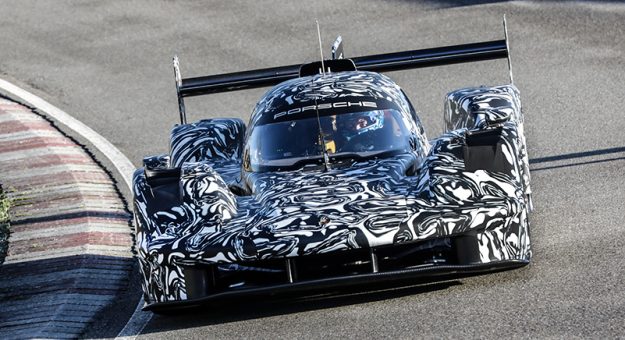Suppliers Bosch, Williams Advanced Engineering and Xtrac Working in Concert to Develop System for All Entries into New 2023 Class
By John Oreovicz
DAYTONA BEACH, Fla. – So, you’ve learned all about plans to bring back the hallowed “GTP” name for the top class of the IMSA WeatherTech SportsCar Championship starting in 2023.
Now it’s time to study the single-source hybrid system that will be integrated into every LMDh prototype that will compete for the Grand Touring Prototype (GTP) crown in the WeatherTech Championship starting in January with the Rolex 24 At Daytona.
First, a quick definition: A hybrid car utilizes two distinct types of power, generally an internal combustion engine and an electric motor-generator. The system harvests kinetic energy that would otherwise go wasted through heat from braking and stores it to batteries, to be deployed as propulsion energy during acceleration.
The hybrid components are vitally important to IMSA and its constituents for several reasons. One, going hybrid introduces an even greater level of technology to a series that arguably already boasts the most technologically advanced cars that race in North America.
The hybrid system will also create a more fuel-efficient, ecologically friendly race car. And with most of the auto industry worldwide shifting production from fossil-fueled vehicles to electric power, a hybrid system maintains IMSA’s relevance to the original equipment manufacturer (OEM) road car industry.
Oh, and one last thing: The hybrid system is a key component in the convergence of worldwide sports car racing. Next year, IMSA’s new hybrid LMDh cars will also be eligible to compete in the Hypercar class of the FIA World Endurance Championship (WEC), including the 24 Hours of Le Mans, which is organized by the Automobile Club de l’Ouest (ACO). In return, eligible WEC LMH prototypes will compete in the WeatherTech Championship GTP class on level terms with LMDh cars.
The standardized hybrid powertrain consists of a common gearbox casing and internals produced by Xtrac, which incorporates a motor generator unit (MGU) and control electronics supplied by Bosch. The harvested energy is stored in a sophisticated battery pack developed by Williams Advanced Engineering.
If it sounds as simple as bolting a few new parts onto an existing race car … well, it’s not.
“It’s pretty involved; the hybrid system is doing a lot of different things,” IMSA Technical Director Matt Kurdock said. “What I tell people is it’s like having a whole second powertrain in the car. Fuel tank, cooling system, gearbox – the hybrid system has all of that on its own, too.”
It starts with the gearbox casing, which houses the electric motor, which in turn requires dedicated liquid cooling. Since this is a racing application, the casing needs to be made as small and light as possible, while designed to fit multiple chassis and interface with several different internal combustion engine configurations.
“Trying to get an MGU in that space, working with Bosch hand-in-hand, we’re obviously really proud of that work,” said Paul Barton, Xtrac Vice President. “Coupled with that, you start thinking about high voltage lines coming out of the bell housing in a safe way that the teams can service it, that was again a massive challenge. There was a lot of very detailed work around a lot of tight packing constraints.”
The Bosch motor is a versatile tool that will allow teams to tailor its 50-kilowatt (67-horsepower) constant output to the power and torque characteristics of each OEM’s internal combustion engine. The motor’s peak power and regenerative capacity is much higher at 180 kilowatts (241 horsepower).
“Whenever a driver goes full throttle, the hybrid system is designed to give a continuous output of power to fill in that gap between where your internal combustion engine would be and where the prescribed Balance of Performance power limits are for that specific championship,” Kurdock explained.
“The combined power level that is permitted by regulation is going to be between 480 and 520 kilowatts at the wheel (643-697 horsepower). And the fact that we’ve got this method of controlling power and regulating power via torque sensors also promotes convergence to LMH, which is restricted by the same formulas, the same methods. This is why we all collectively – FIA, ACO and IMSA – worked so hard towards this goal.”
The collaboration within the IMSA/WEC/ACO Technical Working Group also helped Williams achieve the requisite capabilities needed from the battery and its management system in a more compact package.
“It’s not a question of whether a battery is more powerful; only if it’s appropriate for the application,” said Doug Campling, Head of Motorsport for Williams Advanced Engineering. “The pack for LMDh is about packing a punch in a smaller package, with a very high charge and discharge rate.
“Working with the constraints of cost-effectiveness and reliability, we still managed to get state-of-the-art technology baked in. And since we were able to tune it right from the get-go and had a good handle on what exactly the use cycle is, it allows things like the use of smaller radiators on the car.”
Watching a 2023 WeatherTech Championship race trackside or on television, you probably won’t notice the new hybrid system in action – unless you catch a glimpse of an LMDh car silently gliding through the pits or the paddock on electric power alone.
But when you imagine the opportunities it offers for your favorite GTP team and drivers to compete for the overall win not only at Daytona, Sebring or anyplace on the WeatherTech Championship calendar, but also at Le Mans, Spa or Fuji, you’ll understand.
